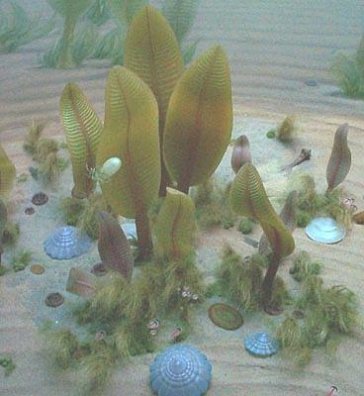
 |
easy to interpret and may belong to extinct phyla. But besides the fossils of soft bodies, Vendian rocks contain trace fossils, probably made by wormlike animals slithering over mud. The Vendian rocks thus give us a good look at the first animals to live on Earth. The Ediacaran hey-day predates by a distinct interval of perhaps 20 million years or more, the so-called "Cambrian Explosion". Although some scientists believe that many of these Ediacara fauna might have survived into the Cambrian period, they had vanished without a trace from later fossil records. Other scientists have suggested that the Ediacaran fauna were "failed experiments" in the evolution of multicellular animals. Unlike the Cambrian organisms, these odd designs left no descendants. A novel explanation suggests that the Ediacaran fossils weren't animals at all. Rather, they were probably lichens. Whatever the interpretation, it seems that the appearance of the Ediacaran fauna and the Cambrian biota are two separate events, and both flourished suddenly in a "complete state". |
Figure 01a Ediacara Fauna [view large image] |
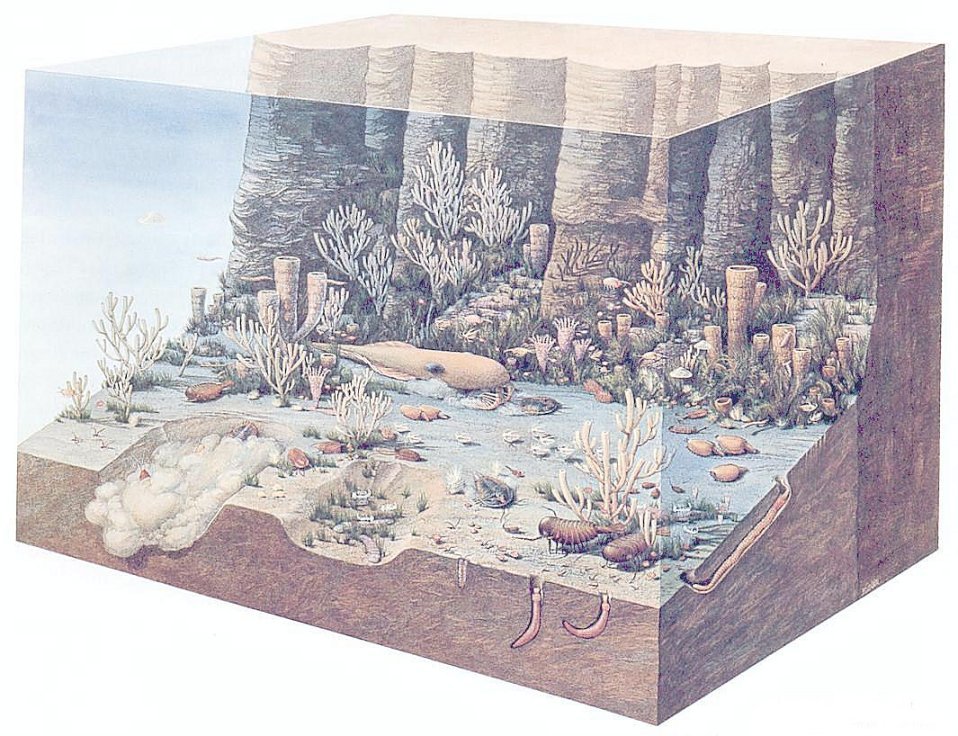 |
|
Figure 01b Cambrian Period [view large image] |
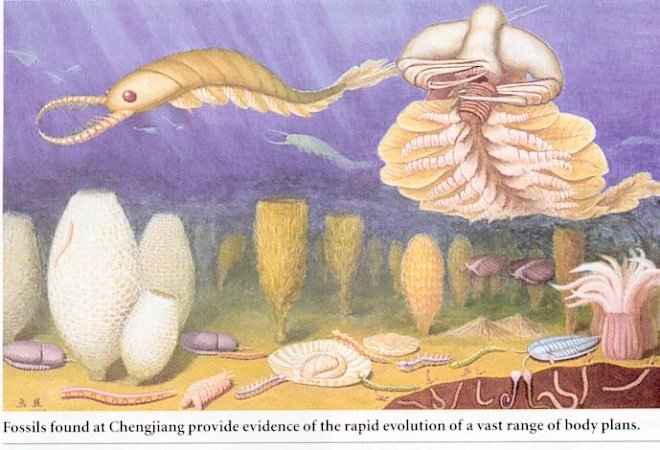 |
They include virtually all the groups known from the Burgess Shale and other Middle Cambrian localities, thus compressing the available time for the morphological diversification of metazoans, known as the Cambrian Explosion, to just 10 Million years or so. These extraordinary fossil deposits, where organisms are so well preserved that even their soft parts remain as carbon films, are referred to as Lagerstätten, a German word that means "resting places", only recently borrowed by geologists. A lagerstatte is a spectacular rarity, and a few dozen of them are scattered through the Earth's geologic record like gems. |
Figure 01c Chengjiang Fossils [view large image] |
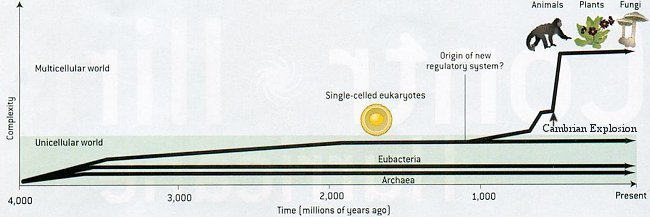 |
Research in 2004 attributed the complexity of multicellular organism to the use of RNA based regulatory signals. The Cambrian explosion was related to the abrupt addition of this genetic regulatory system. Figure 01d shows the complexity of eubacteria and archaea at low levels over the past billion years up to the present. While the complexity in eukeayote organisms advanced graudully up to a ceiling and then |
Figure 01d Evolution of Complexity |
increased abruptly at the Cambrian explosion when a new regulatory system became available. (click here for detail). The proliferation of complex life forms some 20 million years prior to the Cambrian explosion might be just the initial trials to become multicellular. |
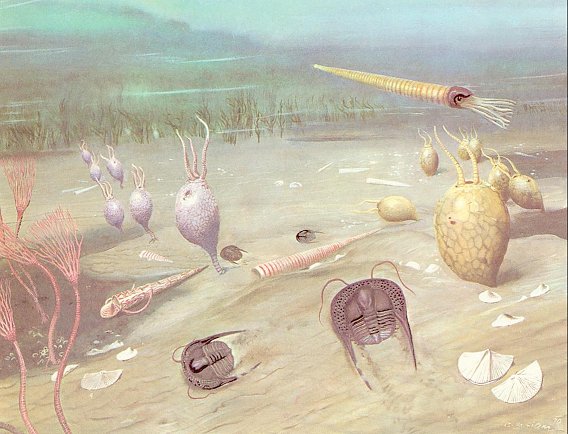 |
|
Figure 02 Ordovician Period [view large image] |
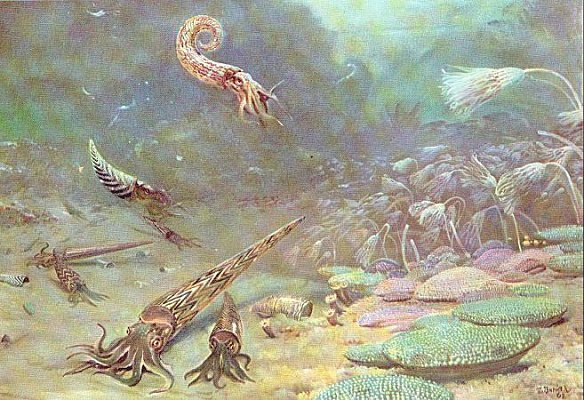 |
|
Figure 03 Silurian Period [view large image] |
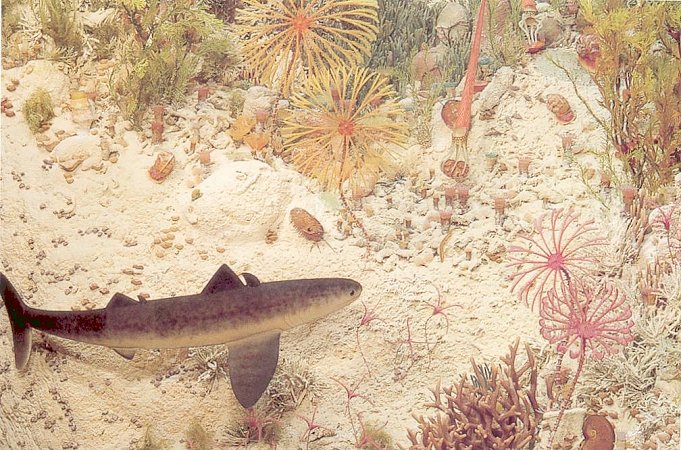 |
|
Figure 04 Devonian Period [view large image] |
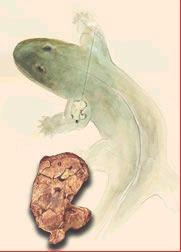 |
 |
A 365-million-year-old arm bone fossil was found in 2004 (see Figure 04a). It came from one of the first creatures able to do push-ups, an evolutionary step that was necessary for animals to move from the sea to dry land. There were no vertebrates on dry land, and the oceans were a place of fierce, toothy meat eaters - a predatory world of eat or be eaten. This defining moment has been captured by the drawing in Figure 04b. It was into this hostile environment that a two-foot-long animal that was more than a fish and less than a true amphibian made its brief appearance in the fossil record. This four-legged creature had a |
Figure 04a Fossil [view large image] |
Figure 04b First Land Animal [view large image] |
humerus, or upper arm bone. Such a bone, far different from the flipper bones of fish, gave the creature an important new ability - it could raise its upper body like an athlete doing push-ups. |
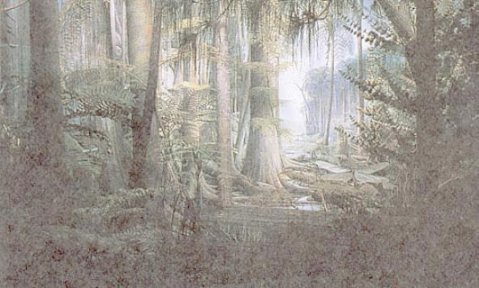 |
|
Figure 05 Carboniferous Period [view large image] |
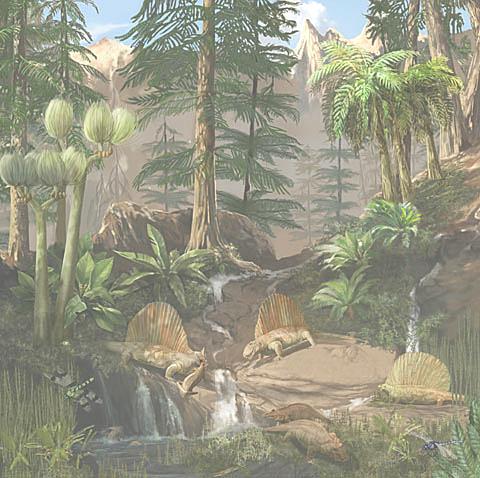 |
|
Figure 06 Permian Period [view large image] |
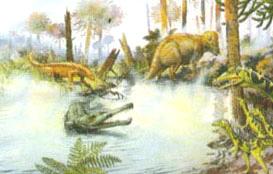 |
|
Figure 07 Triassic Period |
coelophysis, which walked and ran on their hind legs, captured prey with fore- limbs and jaws, and balanced their swaying bodies with stiffly extended tails. |
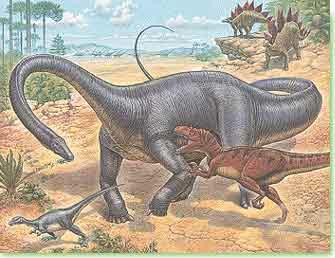 |
|
Figure 08 Jurassic Period |
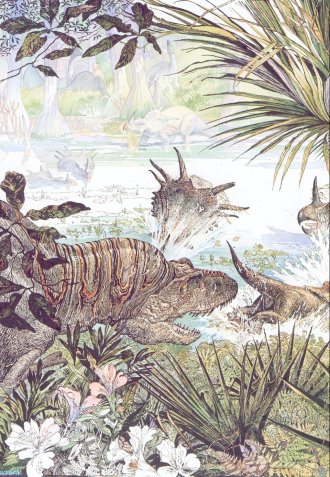 |
|
Figure 09 Cretaceous Period [view large image] |
 |
|
Figure 10 Tertiary Period |
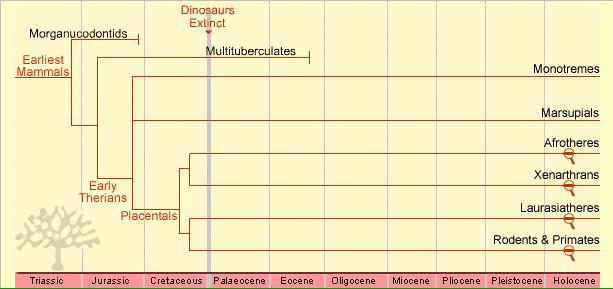 |
 |
|
Figure 11 Mammal Evolution |
Figure 12 Diversification |
living monotremes (such as the platypus who lay eggs, and marsupials who nurtured the young in a pouch; see Figure 11 for the evolutionary history of the mammals). While |
 |
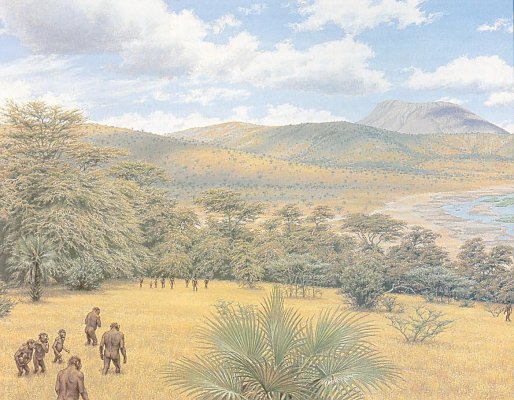 |
|
Figure 13 Oldest Hominid |
Figure 14 Hominids in Africa [view large image] |
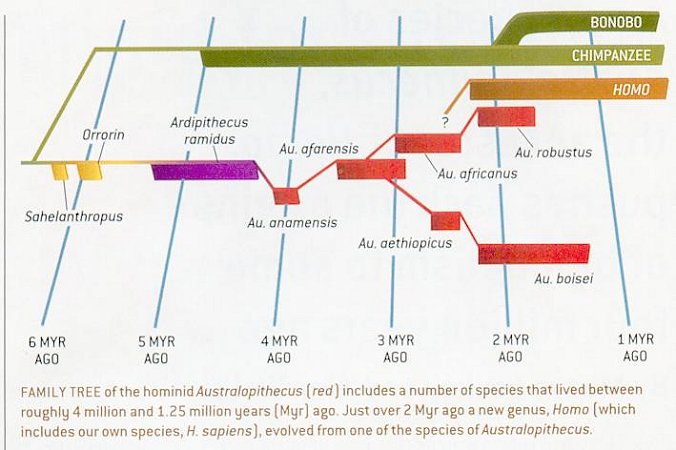 |
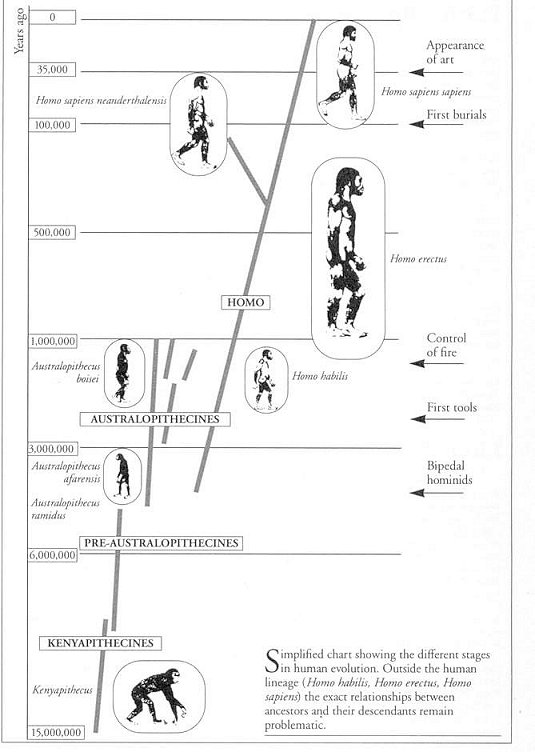 |
Figure 15 shows the family tree of the hominids. The 4.2 million years old Australopithecus anamensis is the descendant of Sahelanthropus tchadensis. It looks similar to the 3.5 million year old A. afarensis, a small-brained, big-faced bipedal species to which the famous "Lucy" belonged. Lucy and her kind were upright walkers but retained many ape-like characteristics. They probably represent the transition from tree dwelling to bipedal walking in the savannas as East Africa dried up. Figure 16 shows the Homo lineage starting from about two million |
Figure 15 Family Tree |
Figure 16 Human Evolution |
years ago. The use of tool and fire started about the same time. The first exodus of hominids from Africa soon followed. There were at least four waves of emigration |
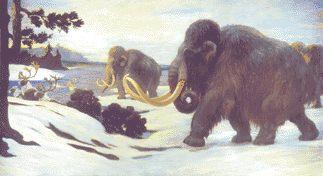 |
|
Figure 17 Quaternary Period [view large image] |
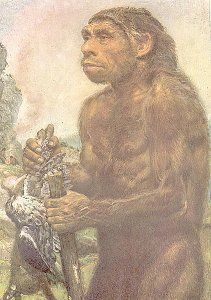 |
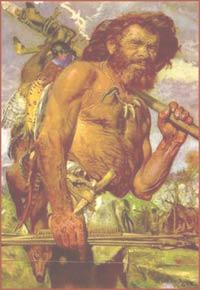 |
humans, who emigrated from Africa about 60000 years ago, may have slaughtered the Neanderthals. Eventually, around 35000 years ago only one species, Homo sapiens sapiens, was left. We thus find ourselves alone and yet the most numerous and successful primates in history. Such success may be at the expense of the natural environment. All the giant animals disappeared around this time. Since this was not associated with any obvious climatic change, we must therefore suspect that human may very possibly have played a large part in these extinctions. The earth's mammal faunas have been even more reduced during the last hundred years, until many of the herbivores that once roamed North America and Africa in their thousands are nearly extinct or can be seen only in protected game parks. |
Figure 20 Neanderthals |
Figure 21 Homo Sapiens [view large image] |